KAATSU training is a novel training, which is performed under conditions of restricted blood flow. It can induce a variety of beneficial effects such as increased muscle strength, and it has been adopted by a number of facilities in recent times. The purpose of the present study is to know the present state of KAATSU training in Japan and examine the incidence of adverse events in the field. The data were obtained from KAATSU leaders or instructors in a total of 105 out of 195 facilities where KAATSU training has been adopted. Based on survey results, 12,642 persons have received KAATSU training (male 45.4%, female 54.6%). KAATSU training has been applied to all generations of people including the young (<20 years old) and the elderly (>80 years old). The most popular purpose of KAATSU training is to strengthen muscle in athletes and to promote the health of subjects, including the elderly. It has been also applied to various kinds of physical conditions, cerebrovascular diseases, orthopedic diseases, obesity, cardiac diseases, neuromuscular diseases, diabetes, hypertension and respiratory diseases. In KAATSU training, various types of exercise modalities (physical exercise, walking, cycling, and weight training) are used. Most facilities have used 5-30 min KAATSU training each time, and performed it 1-3 times a week. Approximately 80% of the facilities are satisfied with the results of KAATSU training with only small numbers of complications reported. The incidence of side effects was as follows; venous thrombus (0.055%), pulmonary embolism (0.008%) and rhabdomyolysis (0.008%). These results indicate that the KAATSU training is a safe and promising method for training athletes and healthy persons, and can also be applied to persons with various physical conditions.
View full abstract
